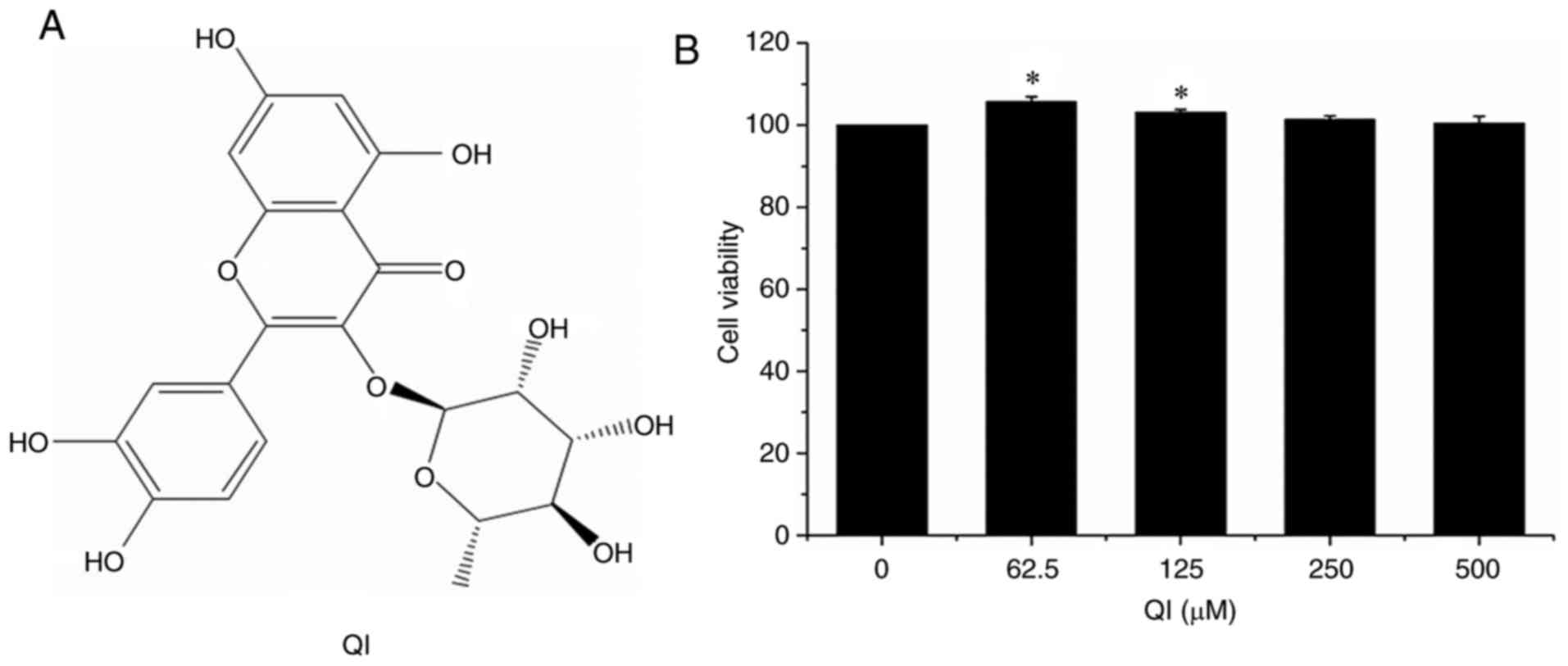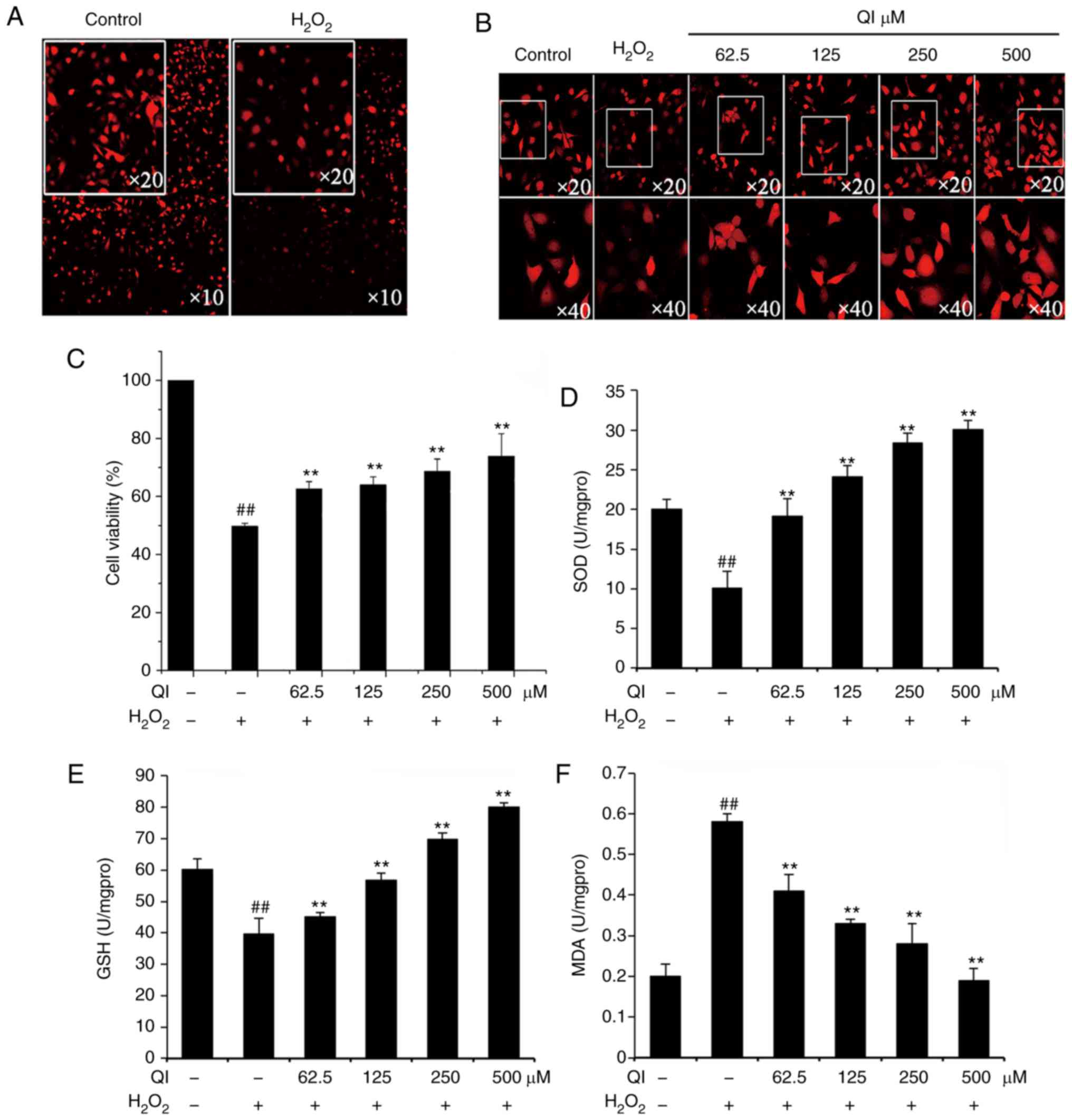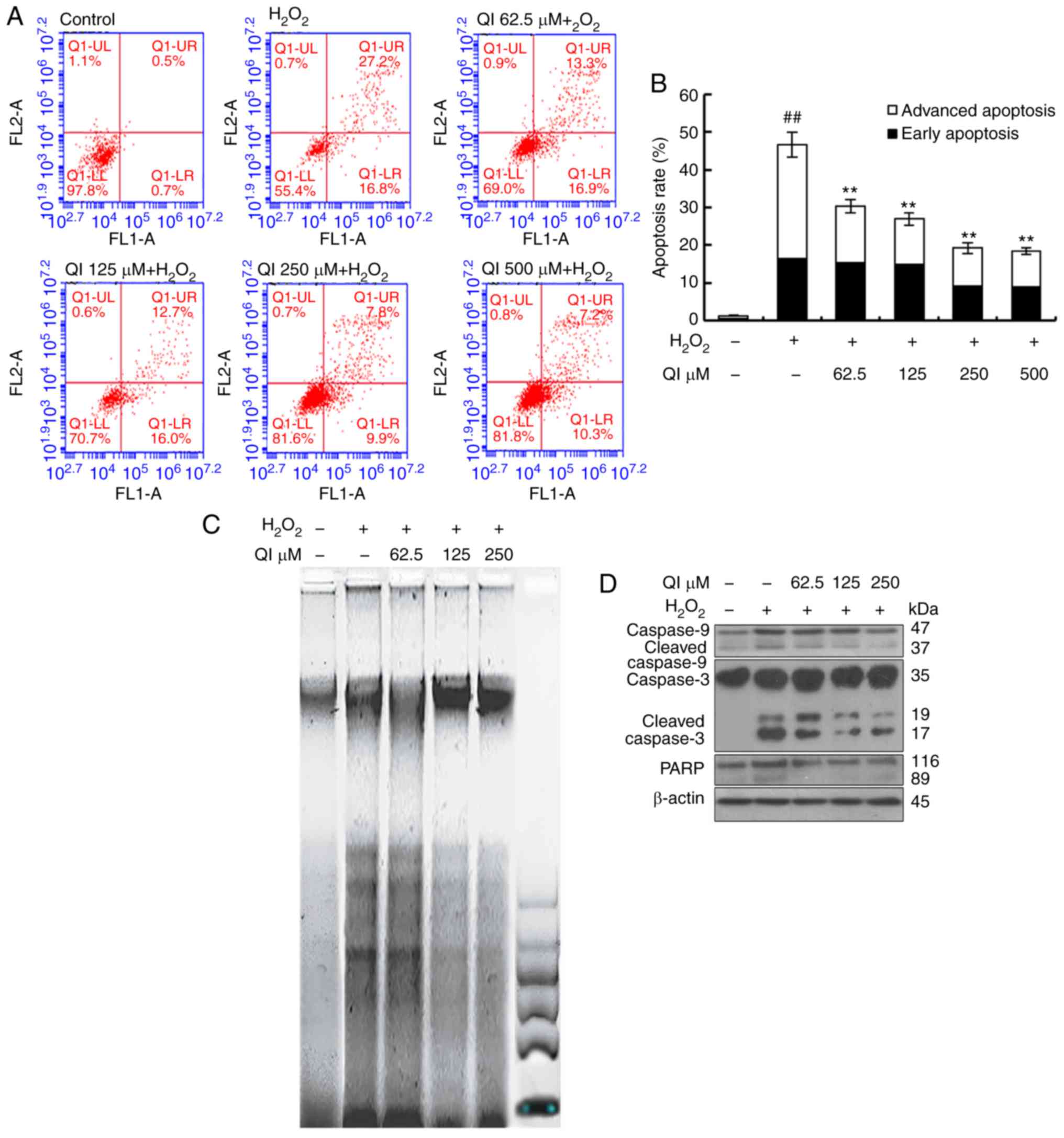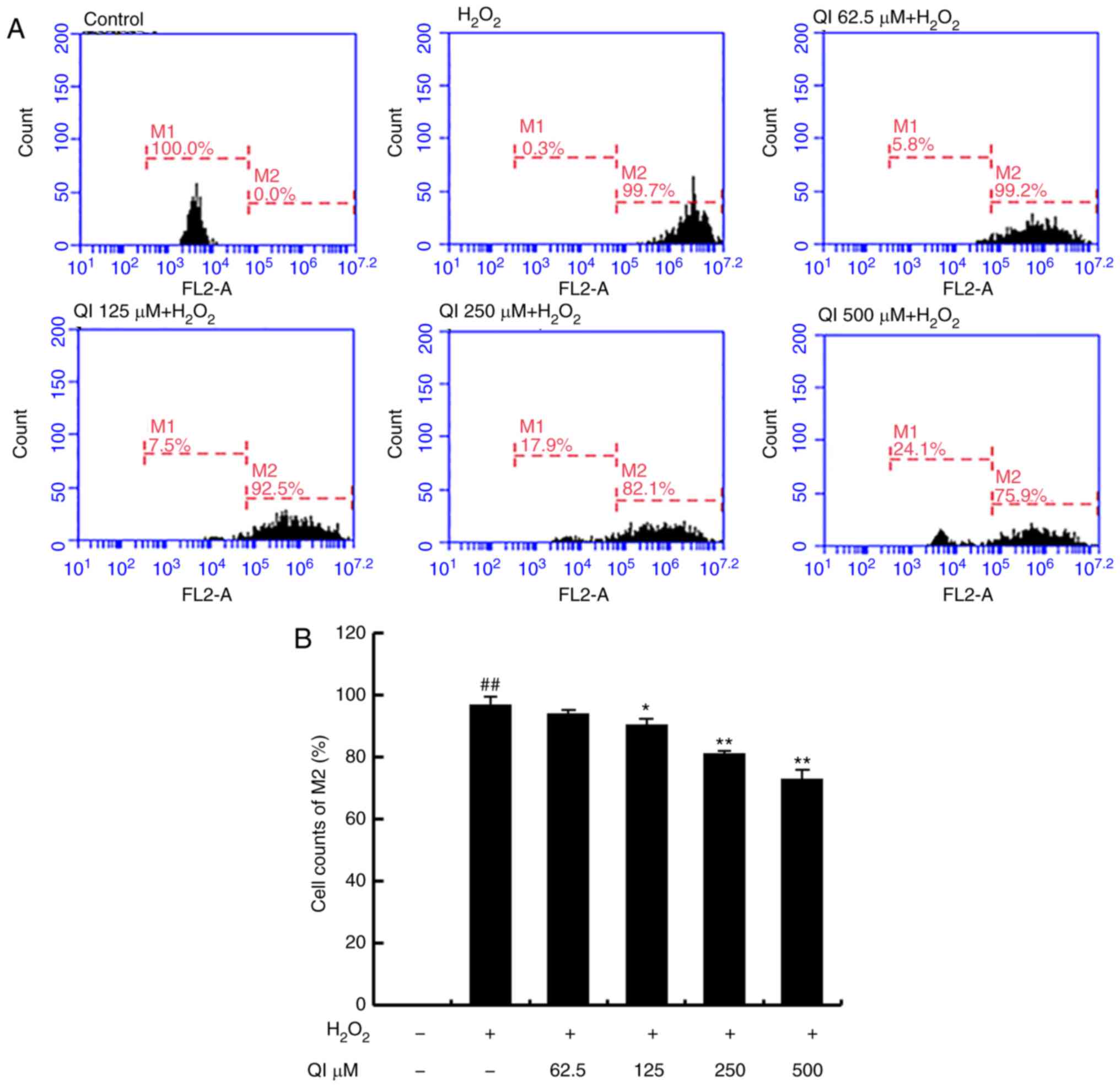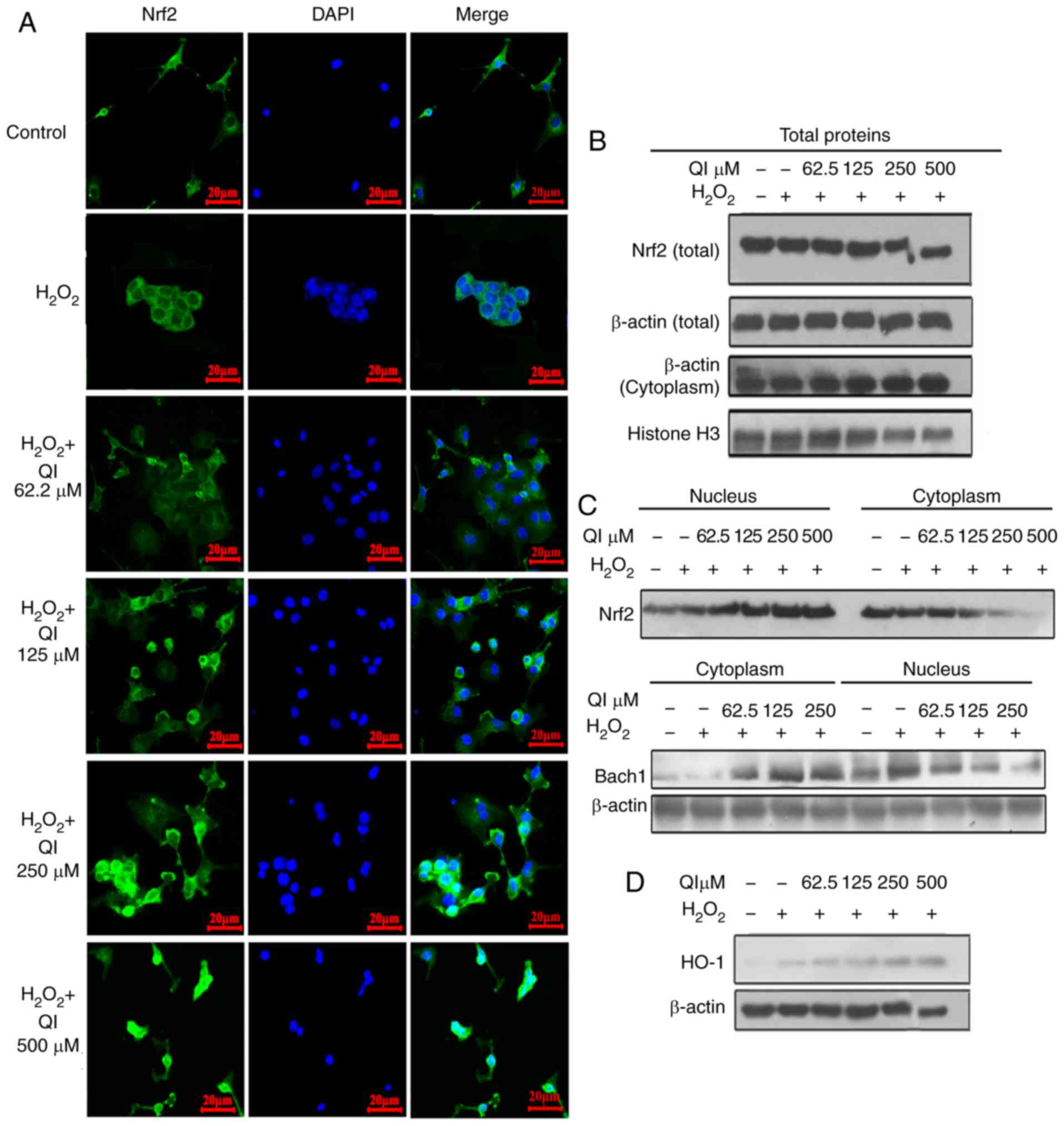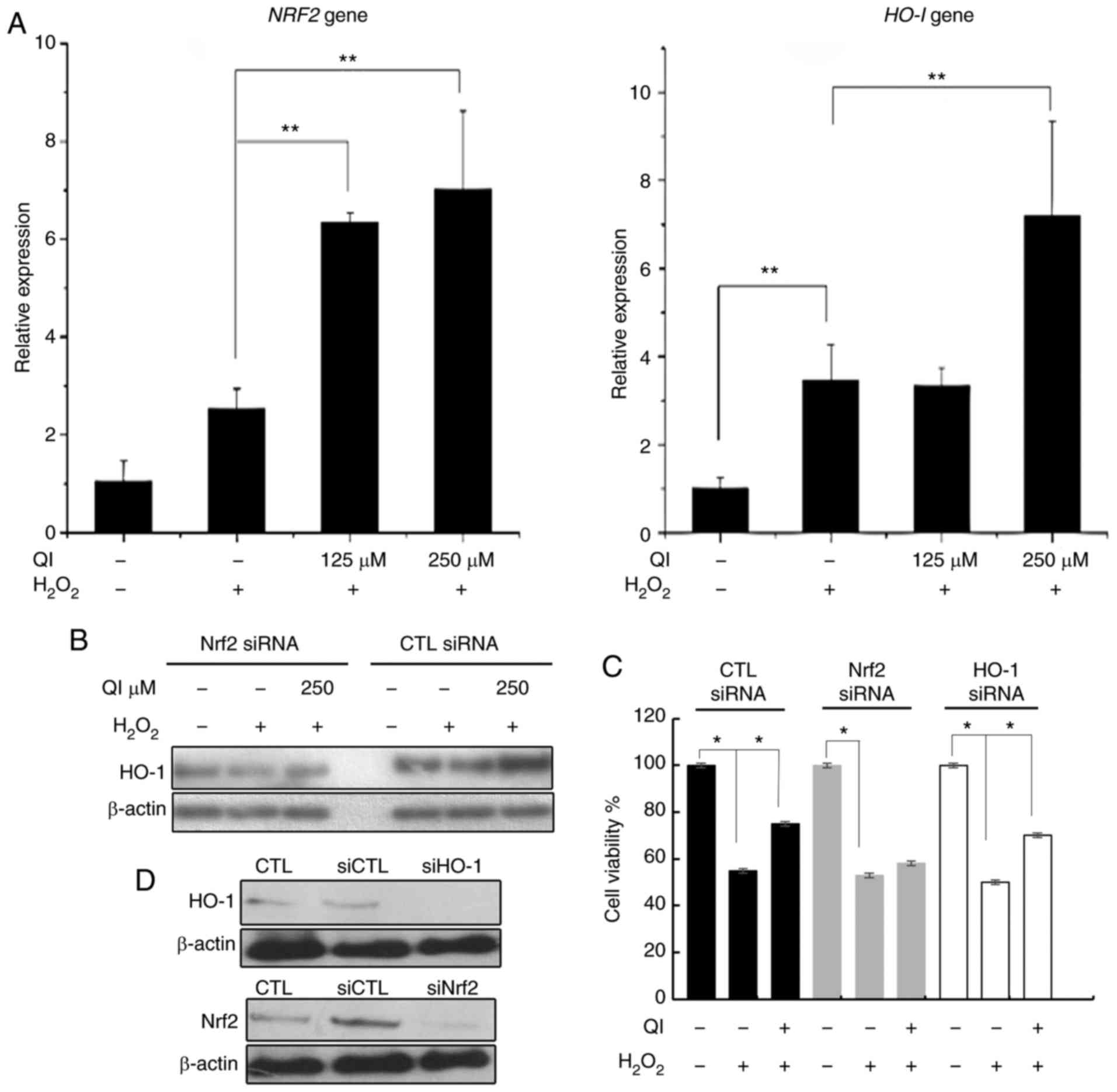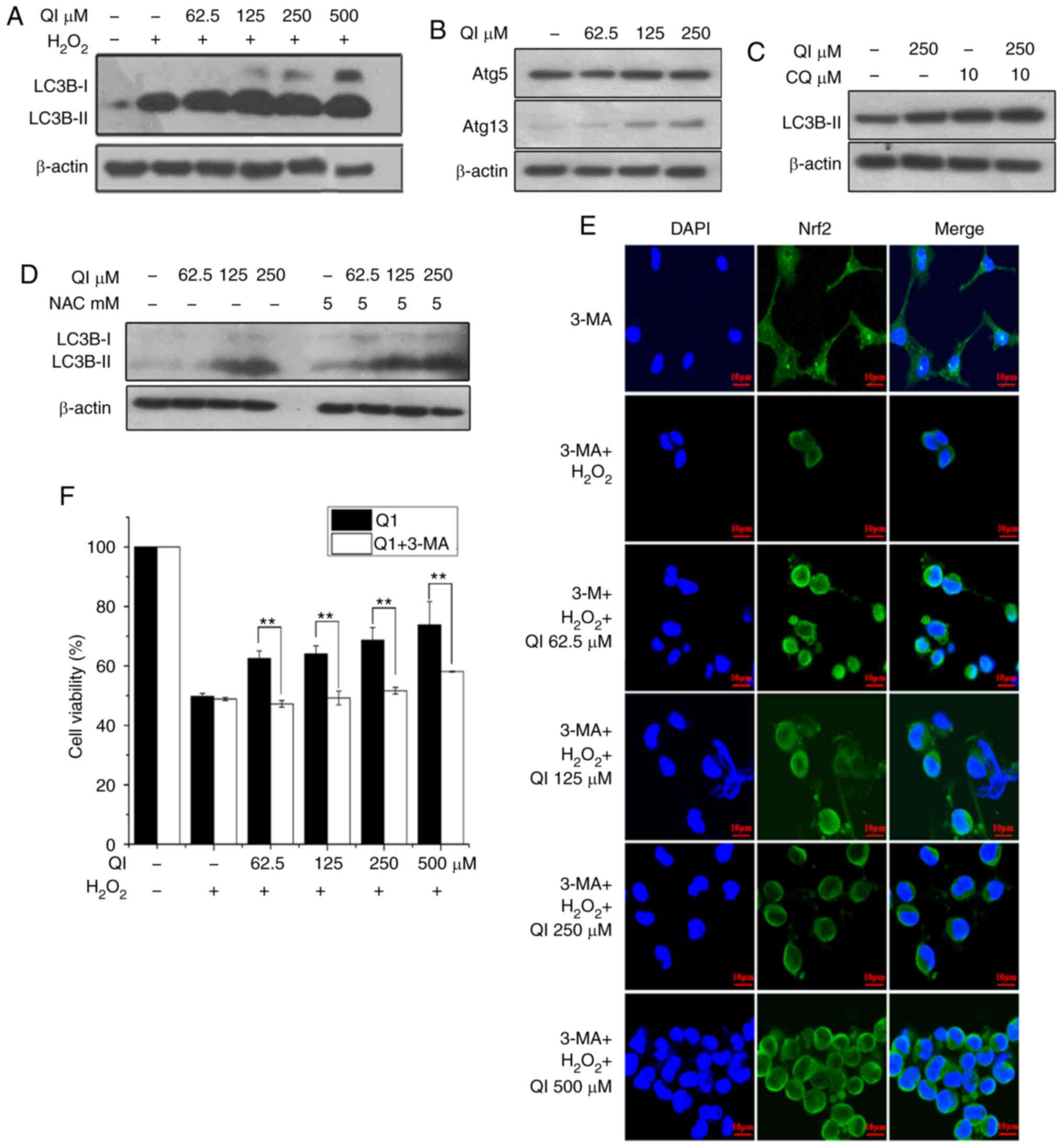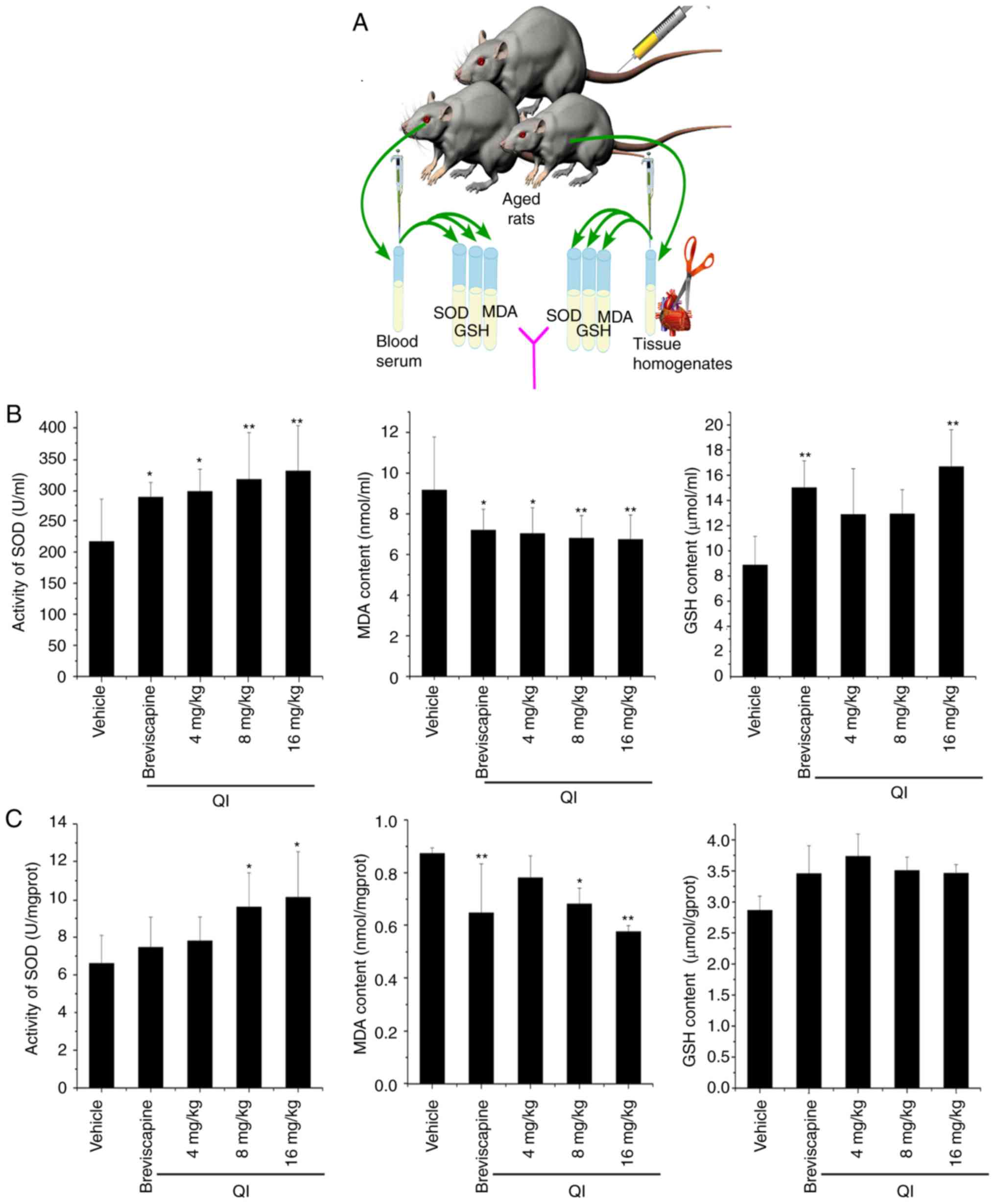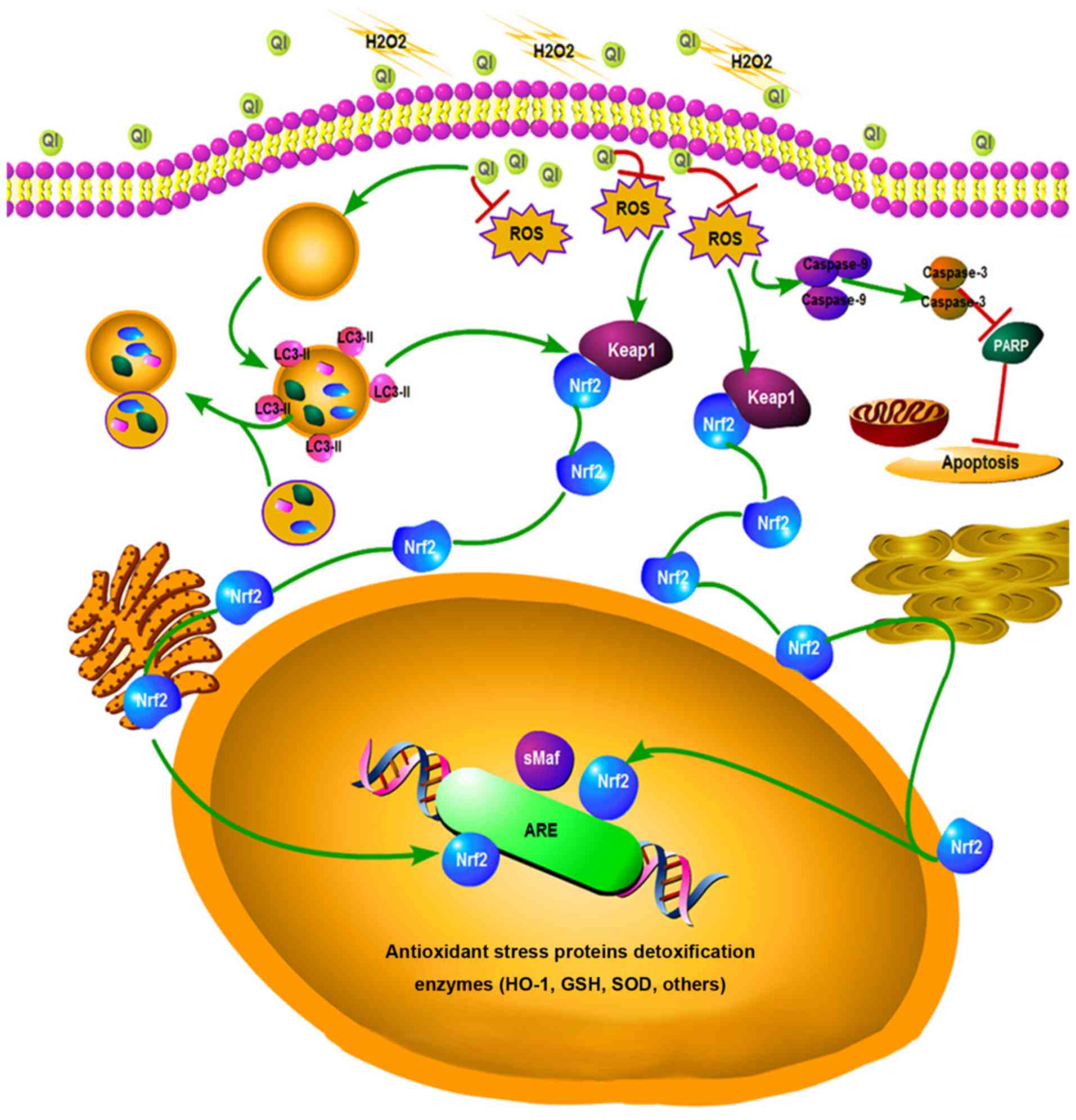|
1
|
Finkel T and Holbrook NJ: Oxidants,
oxidative stress and biology of ageing. Nature. 408:239–247. 2000.
View Article : Google Scholar : PubMed/NCBI
|
|
2
|
Rahman T, Hosen I, Islam MM and Shekhar
HU: Oxidative stress and human health. Adv Biosci Biotechnol.
3:997–1019. 2012. View Article : Google Scholar
|
|
3
|
Birben E, Sahiner UM, Sackesen C, Erzurum
S and Kalayci O: Oxidative stress and antioxidant defence. World
Allergy Organ J. 5:9–19. 2012. View Article : Google Scholar : PubMed/NCBI
|
|
4
|
Motohashi H and Yamamoto M: Nrf2-Keap1
defines a physiologically important stress response mechanism.
Trends Mol Med. 10:549–557. 2004. View Article : Google Scholar : PubMed/NCBI
|
|
5
|
Dhakshinamoorthy S, Jain AK, Bloom DA and
Jaiswal AK: Bach1 competes with Nrf2 leading to negative regulation
of the antioxidant response element (ARE)-mediated NAD(P)H: Quinone
oxidoreductase 1 gene expression and induction in response to
antioxidants. J Biol Chem. 280:16891–16900. 2005. View Article : Google Scholar : PubMed/NCBI
|
|
6
|
Chen S, Tang Y, Qian Y, Chen R, Zhang L,
Wo L and Chai H: Allicin prevents
H2O2-induced apoptosis of HUVECs by
inhibiting an oxidative stress pathway. BMC Complement Altern Med.
14:3212014. View Article : Google Scholar
|
|
7
|
Maiuri MC, Zalckvar E, Kimchi A and
Kroemer G: Self-eating and self-killing: Crosstalk between
autophagy and apoptosis. Nat Rev Mol Cell Biol. 8:741–752. 2007.
View Article : Google Scholar : PubMed/NCBI
|
|
8
|
Hayashi K, Dan K, Goto F, Tshuchihashi N,
Nomura Y, Fujioka M, Kanzaki S and Ogawa K: The autophagy pathway
maintained signaling crosstalk with the Keap1-Nrf2 system through
p62 in auditory cells under oxidative stress. Cell Signal.
27:382–393. 2015. View Article : Google Scholar
|
|
9
|
Kim JA, Jung YS, Kim MY, Yang SY, Lee S
and Kim YH: Protective effect of components isolated from
Linderaerythrocarpa against oxidative stress-induced apoptosis of
H9c2 cardiomyocytes. Phytother Res. 25:1612–1617. 2011. View Article : Google Scholar : PubMed/NCBI
|
|
10
|
Yu YB, Miyashiro H, Nakamura N, Hattori M
and Park JC: Effects of triterpenoids and flavonoids isolated from
Alnus firma on HIV-1 viral enzymes. Arch Pharm Res. 7:820–826.
2007. View Article : Google Scholar
|
|
11
|
Boppana K, Dubey PK, Jagarlapudi SA,
Vadivelan S and Rambabu G: Knowledge based identification of MAO-B
selective inhibitors using pharmacophore and structure based
virtual screening models. Eur J Med Chem. 44:3584–3590. 2009.
View Article : Google Scholar : PubMed/NCBI
|
|
12
|
Jang DS, Kim JM, Kim J, Yoo JL, Kim YS and
Kim JS: Effects of compounds isolated from the fruits of Rumex
japonicas on the protein glycation. Chem Biodivers. 5:2718–2723.
2008. View Article : Google Scholar : PubMed/NCBI
|
|
13
|
Choi B, Bae JY, Kim DS, Li J, Kim JL, Lee
YJ and Kang YH: Dietary compound quercitrindampents VEGF induction
and PPAR gamma activation in oxidized LDL-exposed murine
macrophages: Association with scavenger receptor CD36. J Agric Food
Chem. 58:1333–1341. 2010. View Article : Google Scholar
|
|
14
|
Hubert DJ, Dawe A, Florence NT, Gilbert
KD, Angele TN, Buonocore D, Finzi PV, Vidari G, Bonaventure NT,
Marzatico F and Paul MF: In vitro hepatoprotective and antioxidant
activities of crude extract and isolated compounds from
Ficusgnaphalocarpa. Inflammonpharmacology. 19:35–43. 2011.
View Article : Google Scholar
|
|
15
|
Zhi K, Li M, Bai J, Wu Y, Zhou S, Zhang X
and Qu L: Quercitrin treatment protects endothelial progenitor
cells from oxida-tive damage via inducing autophagy through
extracellular signal-regulated kinase. Angiogenesis. 19:311–324.
2016. View Article : Google Scholar : PubMed/NCBI
|
|
16
|
Xu C, Yang B, Zhu W, Li X, Tian J and
Zhang L: Characterisation of polyphenol constituents of Linderae
aggregata leaves using HPLC fingerprint analysis and their
antioxidant activities. Food Chem. 186:83–89. 2015. View Article : Google Scholar : PubMed/NCBI
|
|
17
|
Ning L, Wentworth L, Chen H and Weber SM:
Down-regulation of Notch1 signaling inhibits tumor growth in human
hepatocellular carcinoma. Am J Transl Res. 1:358–366.
2009.PubMed/NCBI
|
|
18
|
Choi HI, Kim HJ, Park JS, Kim IJ, Bae EH,
Ma SK and Kim SW: PGC-1α attenuates hydrogen peroxide-induced
apoptotic cell death by upregulating Nrf-2 via GSK3β inactivation
mediated by activated p38 in HK-2 cells. Sci Rep. 7:4319–4331.
2017. View Article : Google Scholar
|
|
19
|
Li W, Ma F, Zhang L, Huang Y, Li X, Zhang
A, Hou C and Zhu Y and Zhu Y: S-Propargyl-cysteine exerts a novel
protective effect on methionine and choline deficient diet-induced
fatty liver via Akt/Nrf2/HO-1 pathway. Oxid Med Cell Longev.
2016:46908572016. View Article : Google Scholar : PubMed/NCBI
|
|
20
|
Livak KJ and Schmittgen TD: Analysis of
relative gene expression data using real-time quantitative PCR and
the 2(−Delta Delta C(T)) method. Methods. 25:402–408. 2001.
View Article : Google Scholar
|
|
21
|
Li XL, Li YQ, Yan WM, Li HY, Xu H, Zheng
XX, Guo DW and Tang LK: A study of the cardioprotective effect of
breviscapine during hypoxia of cardiomyocytes in vitro and during
myocardial infarction in vivo. Planta Medica. 70:1039–1044. 2004.
View Article : Google Scholar
|
|
22
|
Gao Y, Chu S, Shao Q, Zhang M, Xia C, Wang
Y, Li Y, Lou Y, Huang H and Chen N: Antioxidant activities of
ginsenoside Rg1 against cisplatin-induced hepatic injury through
Nrf2 signaling pathway in mice. Free Radic Res Commun. 51:1–13.
2017. View Article : Google Scholar
|
|
23
|
Hadi H, Carr CS and Suwadi JA: Endothelial
dysfunction: Cardiovascular risk factors, therapy, and outcome.
Vasc Health Risk Manag. 1:183–198. 2005.
|
|
24
|
Lum H and Roebuck KA: Oxidant stress and
endothelial cell dysfunction. Am J Physiol Cell Physiol.
280:C719–C741. 2001. View Article : Google Scholar : PubMed/NCBI
|
|
25
|
Zhai L, Zhang P, Sun RY, Liu XY, Liu WG
and Guo XL: Cytoprotective effects of CSTMP, a novel stilbene
derivative, against H2O2-induced oxidative
stress in human endothelial cells. Pharmacol Rep. 63:1469–1480.
2011. View Article : Google Scholar
|
|
26
|
Kir HM, Dillioglugil MO, Tugay M,
Eraldemir C and Özdoğan HK: Effects of vitamins E, A and D on MDA,
GSH, NO levels and SOD activities in 5/6 nephrectomized rats. Am J
Nephrol. 25:441–446. 2005. View Article : Google Scholar : PubMed/NCBI
|
|
27
|
Sugawara T and Chan PH: Reactive oxygen
radicals and pathogenesis of neuronal death after cerebral
ischemia. Antioxid Redox Signal. 5:597–607. 2003. View Article : Google Scholar : PubMed/NCBI
|
|
28
|
Yates MS, Tran QT, Dolan PM, Osburn WO,
Shin SN, McCulloch CC, Silkworth JB, Taguchi K, Yamamoto M,
Williams CR, et al: Genetic versus chemoprotective activation of
Nrf2 signaling: Overlapping yet distinct gene expression profiles
between Keap1 knockout and triterpenoid-treated mice.
Carcinogenesis. 30:1024–1031. 2009. View Article : Google Scholar : PubMed/NCBI
|
|
29
|
Shibutani ST and Yoshimori T: A current
perspective of autophagosome biogenesis. Cell Res. 24:58–68. 2014.
View Article : Google Scholar :
|















